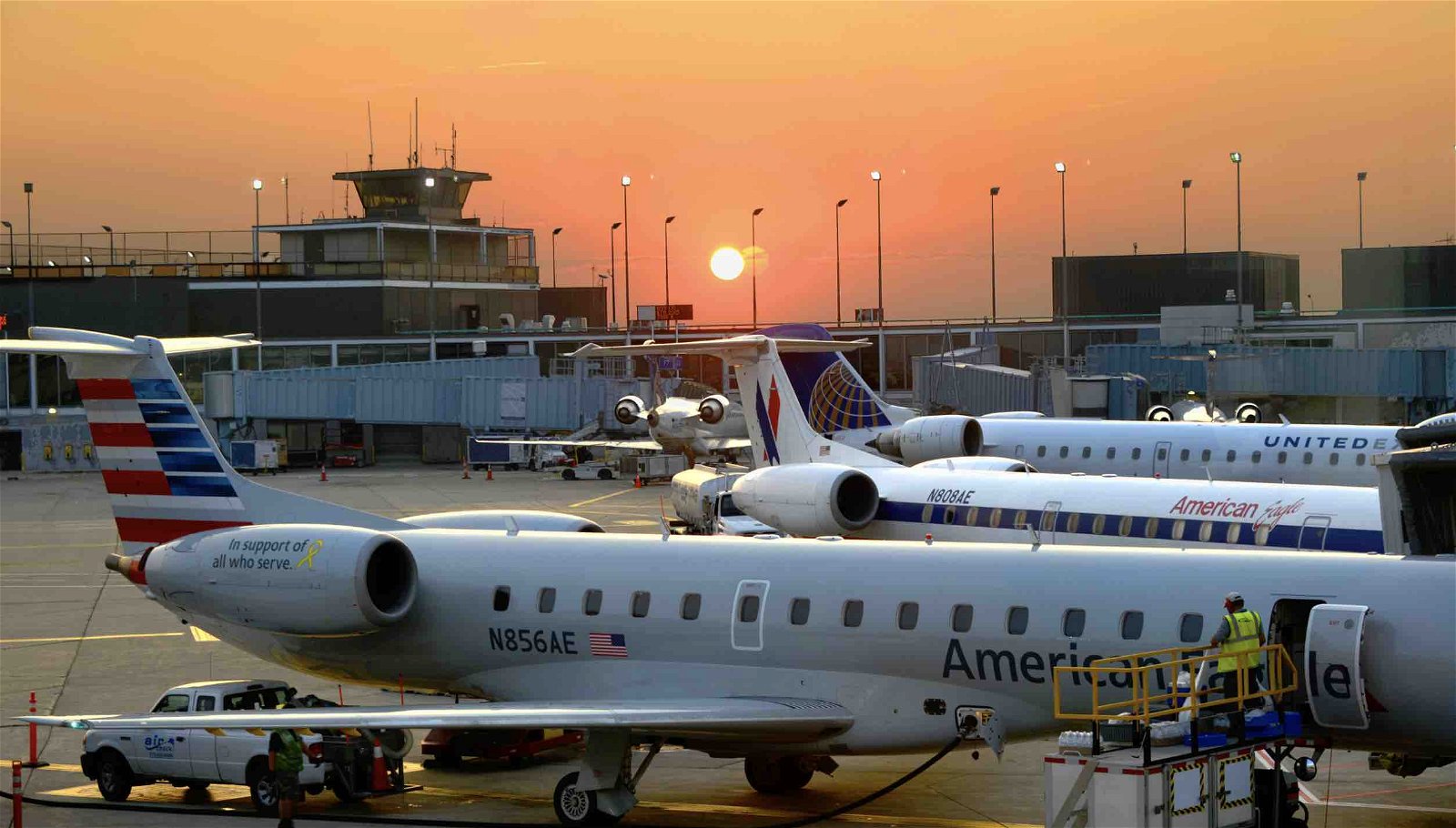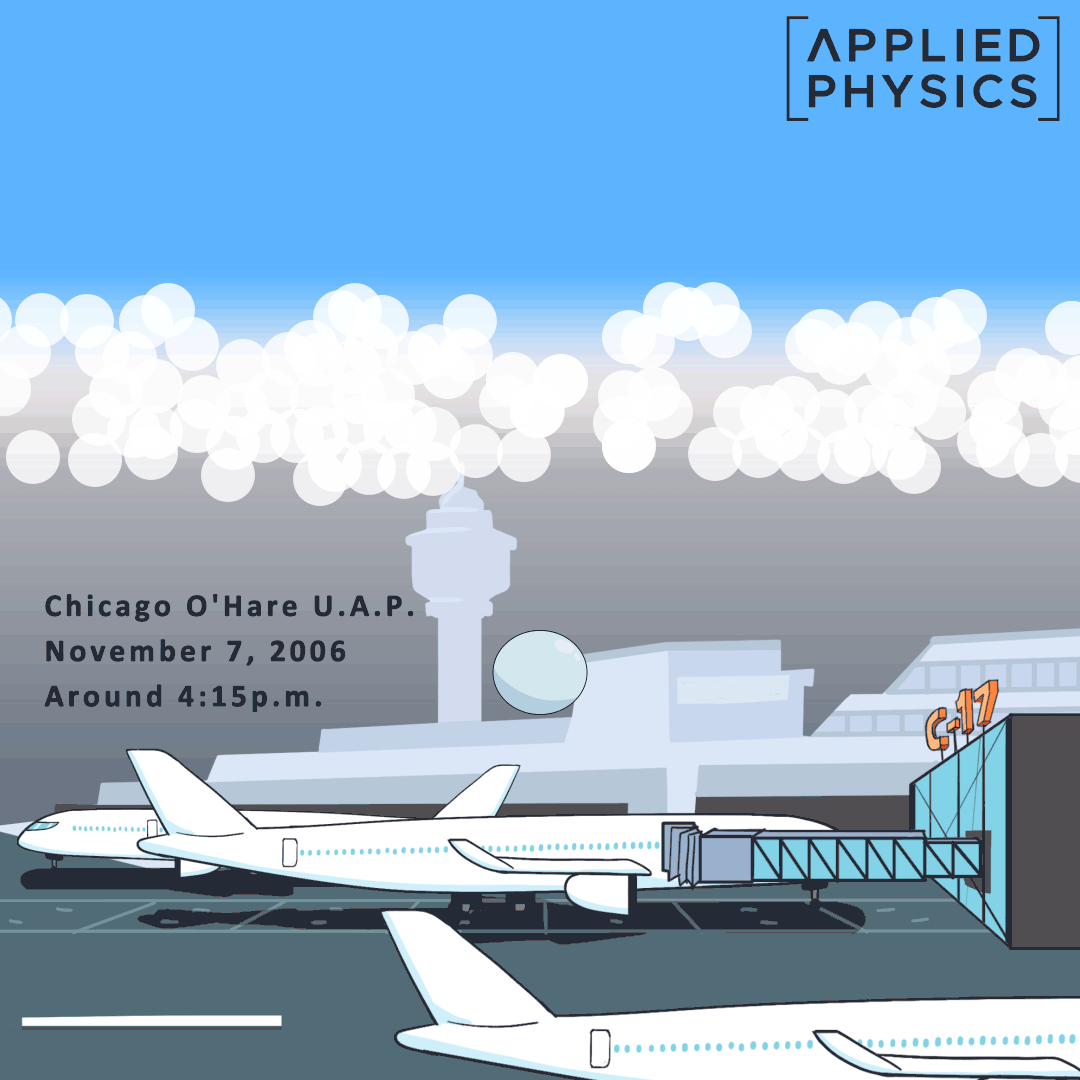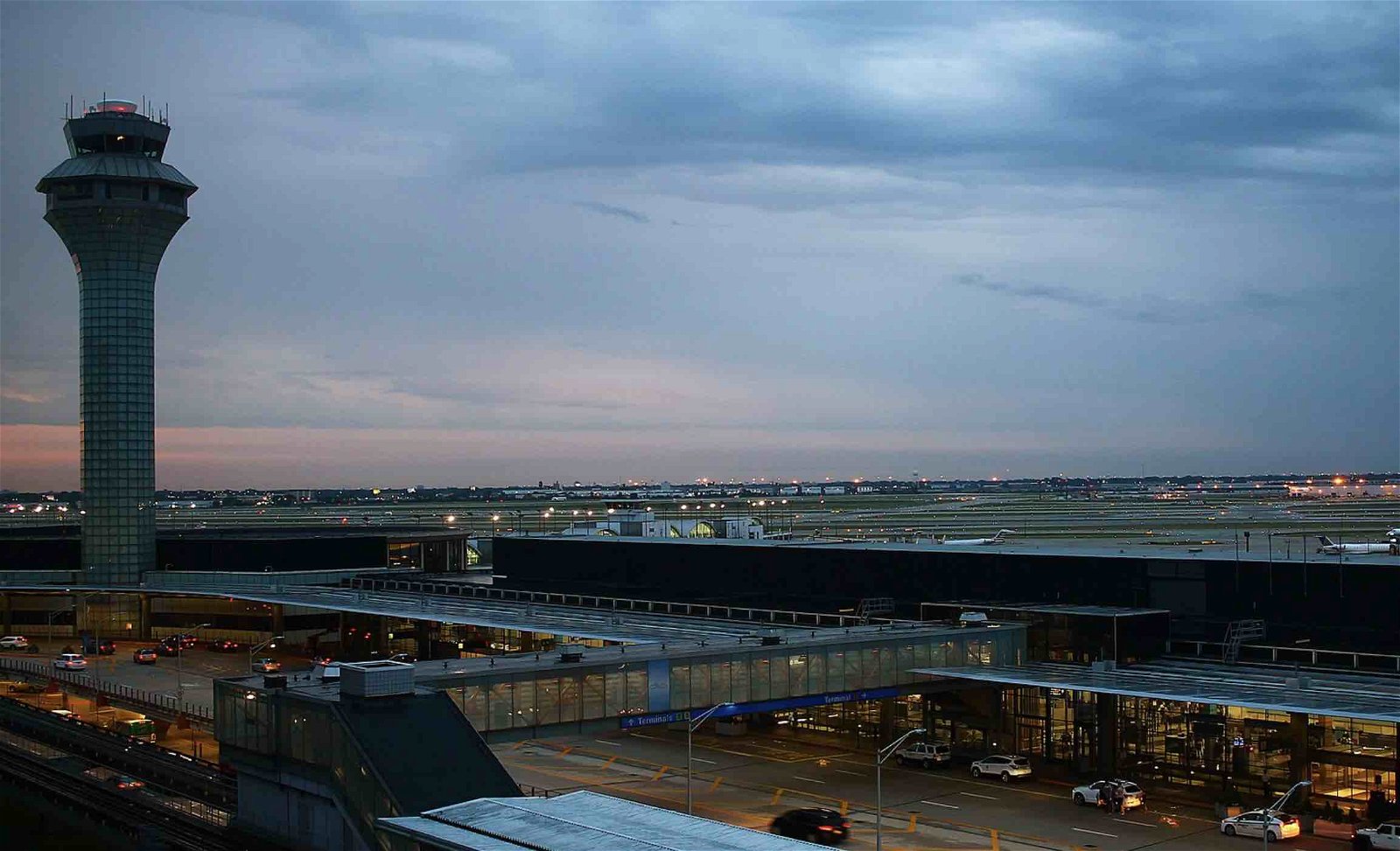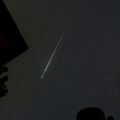Shortly after 4:15 pm CST on November 7, 2006, it might have seemed like any ordinary overcast winter afternoon for United Airlines employees outside Gate C17 at Chicago’s O’Hare International Airport (ORD). Ordinary, except for what looked like a hole in the sky above one of the country’s busiest hubs for international air travel.
Visible in the 1,900 ft cloud base was an almost perfect hole, the apparent footprint left by a round unidentified object that had been seen hovering there just moments earlier before it rapidly ascended, punching through the clouds on its departure.
What unfolded over Chicago that afternoon would become one of the most talked about UAP incidents of the new millennium. Today, what is remembered as the 2006 O’Hare International Airport UAP incident also remains a stark reminder of the potential hazards that aviators face amidst reports involving unrecognized objects that seemingly invade America’s most sensitive airspace with utter disregard for federal aviation ordinances.
The Federal Aviation Administration (FAA) said nothing had been detected on radar that afternoon. Still, several employees—and possibly even a few of the pilots and crew aboard outgoing flights—all observed something in the skies above O’Hare.


One of the earliest witnesses was a United Airlines employee assisting the pushback of a Boeing 737-500 from gate C17. As the witness would later tell investigators, he was “compelled to look straight up for some reason and was startled to see the craft hovering silently.” Upon seeing the object, the employee radioed to notify the United Airlines Zone 5 control coordinator, then alerted the cockpit crew in the plane next to him about the object, who reportedly opened their windows to observe the object.
Meanwhile, another employee that would soon become a witness learned of the hovering object after hearing his coworkers discussing it over company radios.
“I’m a management employee for a major airline and was sitting in my office at around 1630 on Nov. 7th when an employee made a radio call to our station operations center concerning an object hovering over gate C17,” read a report the witness later anonymously filed with the Seattle, Washington-based National UFO Reporting Center (NUFORC).
“I ran out of my office and saw a relatively small object hovering in place over C17,” the employee’s account read. “The METAR was reporting OVC 1900 and I initially estimated the object hovering at about 1000 feet.”
“After about a minute, I saw the aircraft zip to the east and disappeared.”
At that time, the employee contacted his operations center, attempting to confirm the presence of the object. Then, while driving to the adjacent concourse to speak with other witnesses to the events, the individual also contacted the FAA. Upon reaching the gate, the management employee spoke with the first witness, who initially reported the object over the radio.
“The employee stated the object was 500-1000 feet above the ground, rotating, and metallic in nature with no lights,” the NUFORC report read. “He said it looked like a frisbee and was directly above.”
“All employees are very familiar with aircraft around the world’s busiest airport,” the report filed with NUFORC added.
“This was nothing we are familiar with.”
Upon receipt of the report, NUFORC director Peter Davenport contacted Jon Hilkevitch, a traffic reporter with the Chicago Tribune. Although the FAA stated that they had detected nothing on their radars, a FOIA request filed by Hilkevitch would later reveal that there had been communications with Air Traffic Control about the object.
“[T]he Federal Aviation Administration said its air traffic control tower at O’Hare did receive a call from a United supervisor asking if controllers had spotted a mysterious elliptical-shaped craft sitting motionless over Concourse C of the United terminal,” Hilkevitch wrote in a column on January 1, 2007.
“No controllers saw the object,” he added, “and a preliminary check of radar found nothing out of the ordinary, FAA spokeswoman Elizabeth Isham Cory said.”


Hilkevitch also interviewed several of the witnesses, including those who reached out to NUFORC following their sighting.
“I tend to be scientific by nature,” recalled one witness, a United mechanic who had been in the cockpit of a Boeing 777 taxiing to a maintenance hangar at the time of the incident. “I don’t understand why aliens would hover over a busy airport.”
“But I know that what I saw,” the mechanic told Hilkevitch, “and what a lot of other people saw stood out very clearly, and it definitely was not an [Earth] aircraft.”
Whatever the object may have been that these witnesses saw just before sundown on November 7, 2006, remains unknown. However, details about the seemingly unearthly encounter—particularly the strange, circular hole left in the clouds as the object departed—have caused some experts to wonder about how the mechanics behind such an aircraft, if that’s indeed what it was, might operate.
The Chicago O’Hare UAP INcident: A Case for a Warp Drive?
According to a group of more than 30 Ph.D. physicists, witness descriptions of the famous 2006 incident are suggestive in many ways of an advanced form of propulsion that may one day revolutionize space travel.
Applied Physics first came to note in 2021 with the publication of a novel theory produced by its team members, which outlined the hypothetical function of a physical warp drive. Similarities between the concept outlined in their 2021 study, along with certain witness testimony from the 2006 Chicago O’Hare UAP incident, prompted them to perform an analysis that they say revealed several aspects which seemed to match the characteristics expected of a craft employing a warp drive.
Those similarities include the way the craft reportedly moved, along with other features that included its shape, lack of radar signature, and the way it seemingly punched a hole through the cloud deck above it as it left the scene.
Members of the Applied Physics team The Debrief communicated with are quick to note that their analysis is based purely on witness testimony and should not be conveyed as “proof” that what witnesses observed an extraterrestrial spacecraft or other technology employing a functional warp drive.
However, the company’s science team and their analysis do offer potentially meaningful context for the quality of the witness testimony regarding the 2006 Chicago O’Hare UAP incident. It also suggests that, while still speculative, a craft displaying warp drive capabilities could be an explanation that best fits the majority of the witness reports.
Observation 1: The Shape Of The Craft As Described By Witnesses
Notably, several witnesses to the 2006 incident observed what was described as most closely resembling a disc or saucer-shaped craft hovering over Gate C-17.
Dr. Alexey Bobrick, Chief Science Officer (CSO) at Applied Physics, told The Debrief that a saucer-shaped craft with a cupola on top, which has been prominently reported in many UFO observations throughout the decades, would actually be an ideal shape for many known warp drive designs, as proposed in the paper “Introducing Physical Warp Drives,” published by the Advanced Propulsion Laboratory (APL) at Applied Physics.
Applied Physics provided The Debrief with a short scientific explanation for why a flatter shape is beneficial for Alcubierre-like metrics, which can be viewed in the following slides:
Flatter is Better - Applied Physics
“Some models of warp drive spacetimes suggest that the shape of the spacecraft, and the resulting geometry of spacetime bending, could significantly reduce energy requirements,” Bobrick told The Debrief. “Depending on the specific design of the warp drive, the passenger-holding craft may benefit from a saucer or spherical shape per the laws of general relativity.”
Observation 2: The movement of Chicago O’Hare UAP
In their analysis, the Applied Physics team said that there is no known aircraft that can hover in place and then accelerate directly upward at the extreme rate many of the witnesses described.
“From the (witness testimony), it seems reasonable to claim that a metallic object around 50 feet in diameter was hovering ~1,500 feet above a passenger gate at an international airport within regulated airspace,” said Brandon Melcher, Ph.D., one of the physicists behind the team’s analysis. “After some time, the object accelerated from 0 to about ~1,000-2,000 feet per second almost instantaneously.”
Although some modern drones are capable of sudden, fast vertical acceleration from a hovering position, most unmanned aerial vehicles currently in use do not bear the saucer-shape appearance of the craft in question (with a few notable exceptions), and none have been shown to accelerate at the speed many of the witnesses to the Chicago O’Hare UAP incident described.
Observation 3: The lack of radar signature
According to data available in past reports on the 2006 incident, the airport’s radar operators were unable to detect anything on their scopes corresponding to the target described hovering over terminal C17.
“It is interesting to note the absence of any radar evidence of an object in this case,” Melcher told The Debrief. “The Alcubierre warp drive also causes light rays approaching from behind to bounce off the bubble, but away from their initial trajectory.
According to Melcher, if this object were an Alcubierre warp drive, “the radar cross-section would be incredibly small.”
“One fascinating effect of warp bubbles is how they also explain the lack of radar signal,” Melcher says. “Light rays propagating from behind seem to diverge away from the bubble center, masking its detection. This would explain why there was no radar ping to the object allegedly hovering over the passenger gate at ORD. If the light gets deflected away from the object, there will be no radar pings.
Observation 4: The Hole in the Clouds
Among the most novel aspects of the event, and one rarely reported in other UFO cases, involves the testimony that after the craft accelerated vertically, it left behind a distinct hole in the clouds. This component, according to the physicists at Applied Physics, is also consistent with a warp drive spacecraft.
“In our study of (proposed warp drive) solutions, we have found that the Alcubierre warp drive (the first warp metric) appears to induce…behaviors that match the observed phenomena,” Melcher told The Debrief. “This warp drive acts as a focusing lens for material caught up in front of the craft.
“As the bubble passes through a given medium, the particles in front of it move along with the craft for some time, creating a hole due to the time mismatch between the at-rest particles traversing the width of the bubble and the time it takes the bubble to move through the cloud.”


Based on Melcher and the team’s interpretation of warp theory, a craft that raced through a cloud bank like the one present at the time of the 2006 incident would likely produce a hole nearly identical to the one that the witnesses described seeing at the time.
The Applied Physics team does note, however, that there are well-known natural conditions that can also produce circular openings in cloud layers.
“There is a phenomenon called fallstreak holes, or hole-punch clouds,” Melcher says. “Sometimes, clouds in the sky become supercooled. The temperature of the water vapor in the cloud is below freezing at this point, but no seed forms to induce freezing. When a plane or other object flies through such a cloud, it is possible that the pressure differential behind the wings or fins can create or drop a seed of ice. The resulting rapid freezing of the cloud appears as a hole with a central bit of “snowfall,” and the frozen cloud falls as snow for a little bit.”
“Typical flight paths do not take ascending or descending planes directly over airport terminals,” Melcher says, making such a method of departure for any kind of aircraft over one of the world’s busiest airports “a highly unusual and dangerous case.”
“If a plane did indeed create [the] fallstreak hole, it would represent one of the most severe violations of US airspace ever recorded, as it put thousands of civilian lives at risk,” Melcher adds.
Observation 5: Reliability of Witness Testimony
“The witness testimony that has been reported on in the news… bears a number of interesting features,” Melcher and the team told The Debrief.
“The first is the variety of professions and locations from which this object was allegedly seen. The main reports come from taxi mechanics near the C17 gate, above which this object hovered. There was at least one air traffic controller that heard reports of the object and inquired, and there was at least one observer who was driving into the airport and watched the object with other bystanders.
Melcher and the team also noted that while all the reports bear a resemblance to each other, they do not seem contrived and do not necessarily borrow elements from one to the other, but instead provide details that are consistent throughout.
“It appears most public witnesses did not know each other as well,” Melcher says. “We cannot be 100% sure of eye-witness testimony, but those which have been preserved here do not contain major red flags as to reliability.”
Conclusions: Assessing the Chicago O’Hare UAP Incident
The team at Applied Physics concedes that with the data currently available, they cannot discount some earthly explanations, a few of which may involve novel possibilities. One might include a U.S. stealth drone which, they note, “could explain the secrecy and cover-up surrounding the event.” However, the team remains skeptical of this explanation on account of a lack of supporting evidence.
Other possibilities may include unusual weather phenomena or other potentially natural or manmade sources, although there are no widely recognized phenomena that appear to fit all the characteristics of the events observed in 2006.
The Applied Physics team also offered their thoughts on the stigma surrounding incidents like the Chicago O’Hare UAP case, especially for airline pilots and airport personnel who report them.
“The NARCAP report on the incident (written within a few months of its occurrence) made an interesting point about the stigma associated with reporting UAPs in the air transport and air defense industries,” Melcher told The Debrief. “If an object like this truly existed, it could pose a significant security risk. By discrediting and belittling those who report such events, we risk overlooking something that could be real.
“Disparagement has never led to progress or the discovery of truth. Therefore, it is crucial to fund departments such as the All-Domain Anomaly Resolution Office (AARO), which collects vast amounts of data on UAPs to synchronize efforts across all branches of the Department of Defense.”
“The only way to fully investigate sightings like this is to gather more data,” Melcher concludes. “The level of reluctance expressed by several witnesses should be a cause for concern, which is why we must remove this dangerous stigma.”
“Pursuing the truth should be the norm, not suppressing facts and scientific discourse.”
The Applied Physics team cautions that they do not intend their observations to be interpreted to mean they have concluded an alien spacecraft employing warp drive was observed over Illinois in 2006. Such conclusions cannot be drawn solely from witness reports, and would require irrefutable physical data.
However, the team is of the opinion that the behavior of the observed object, as reported by witnesses, aligns with their current understanding of how any warp drive propulsion system would function according to the laws of physics, an achievement that has not yet been made by humans.
“It is essential to note that proposing that the object seen during the Chicago O’Hare UAP incident [employed] a warp drive begs the question of its origins,” Melcher told The Debrief.
“Even though we have made progress on understanding certain aspects of warp drives, huge theoretical and practical gaps remain as obstacles to warp drive construction,” he says, adding that the idea such technology could have somehow been produced on Earth outside the knowledge of mainstream science and engineering “defies our belief.”
Despite this, the Applied Physics team is doubtful the object observed in 2006 could be confidently attributed to extraterrestrials either, emphasizing “the statistical probability that this object was an alien craft is extremely low,” but that Melcher, Bobrick, and the team at Applied Physics “find it fascinating to examine the correlations between UFO sightings and scientific claims regarding hyper-fast travel solutions in general relativity.”
Gianni Martire, CEO of Applied Physics, says, “The exciting thing here is that we can actually answer these types of questions with math and physics. If this were how these topics were presented in school, I think we all would have paid a lot more attention!”
Ultimately, the team’s analysis of the event was intended as a fun thought exercise to educate and inspire, with the hope of challenging scientific stigmas and encouraging people to ask tough and brave questions.
“Math enables the framework to measure,” Melcher says, “but our characters give us the ability to ask.”
Additional resources on the Chicago O’Hare UAP incident can be found below:
NARCAP technical report based on an investigation by Richard Haines: Report of an Unidentified Aerial Phenomenon and its Safety Implications at O’Hare International Airport on November 7, 2006
Jon Hilkevitch’s column in the Chicago Tribune: “In the sky! A bird? A plane? A… UFO”
Witness Reports filed with the National UFO Reporting Center (NUFORC):
Christopher Plain is a Science Fiction and Fantasy novelist and Head Science Writer at The Debrief. Follow and connect with him on Twitter, learn about his books at plainfiction.com, or email him directly at christopher@thedebrief.org.
Micah Hanks is the Editor-in-Chief and Co-Founder of The Debrief. He can be reached by email at micah@thedebrief.org. Follow his work at micahhanks.com and on Twitter: @MicahHanks.

